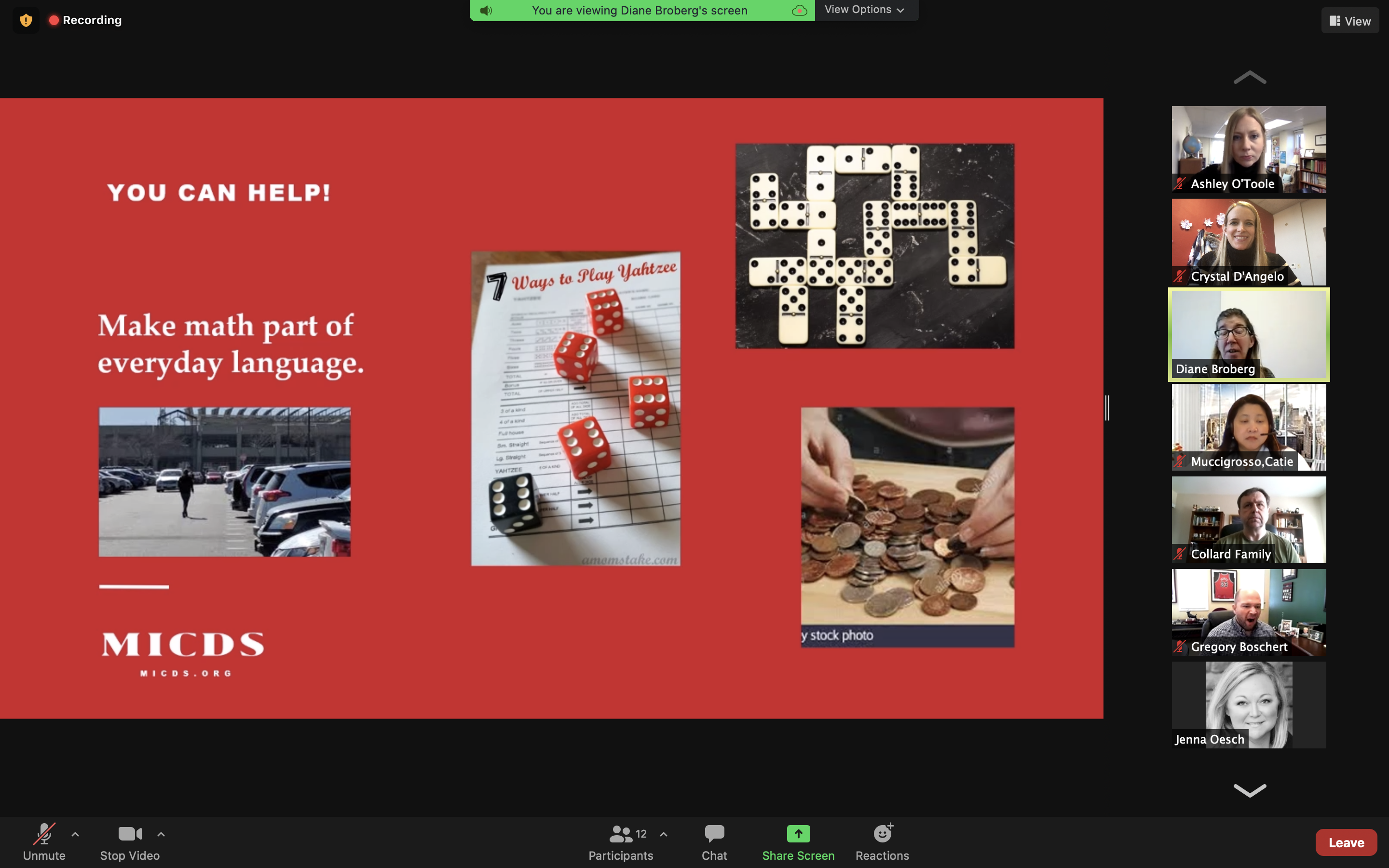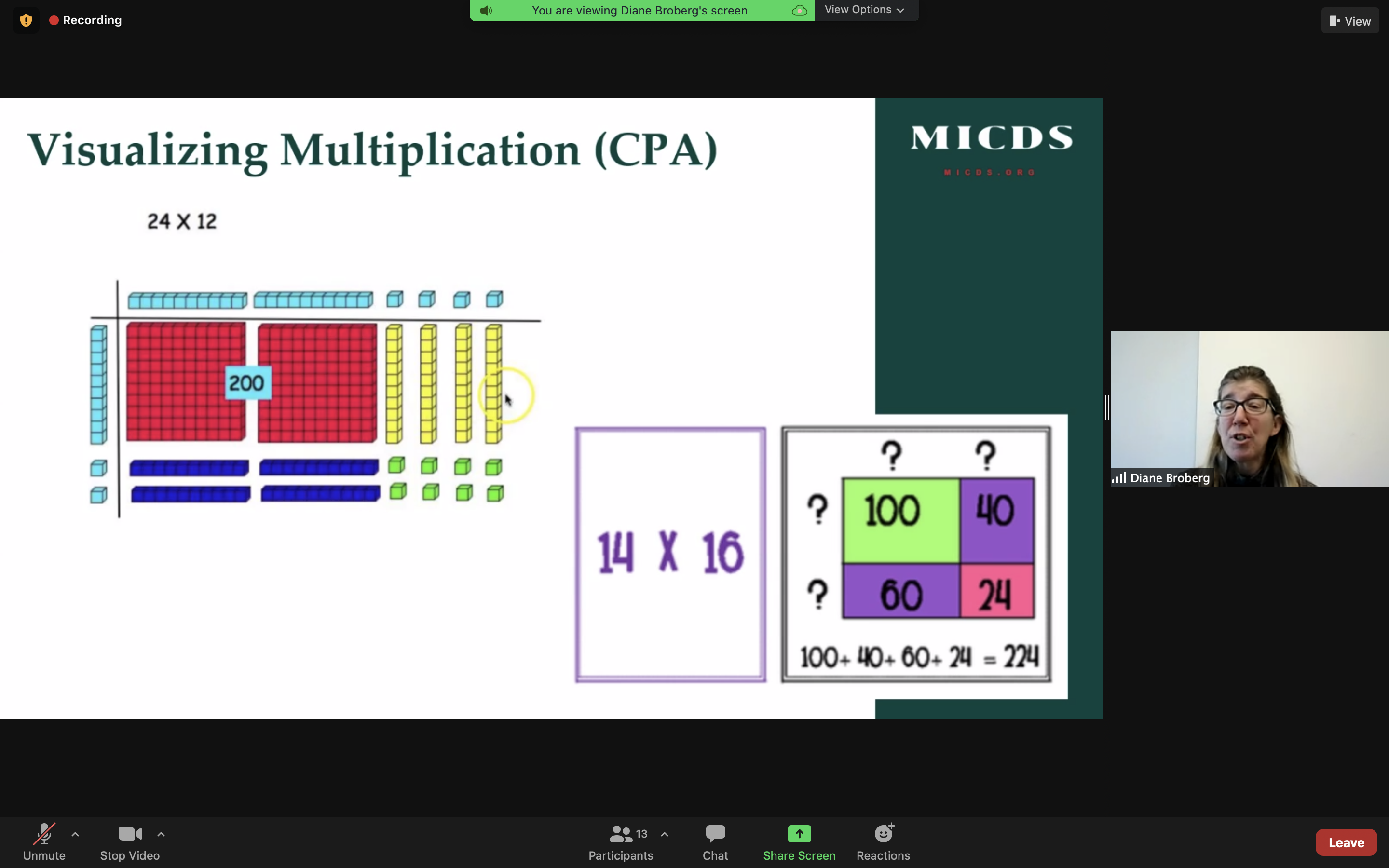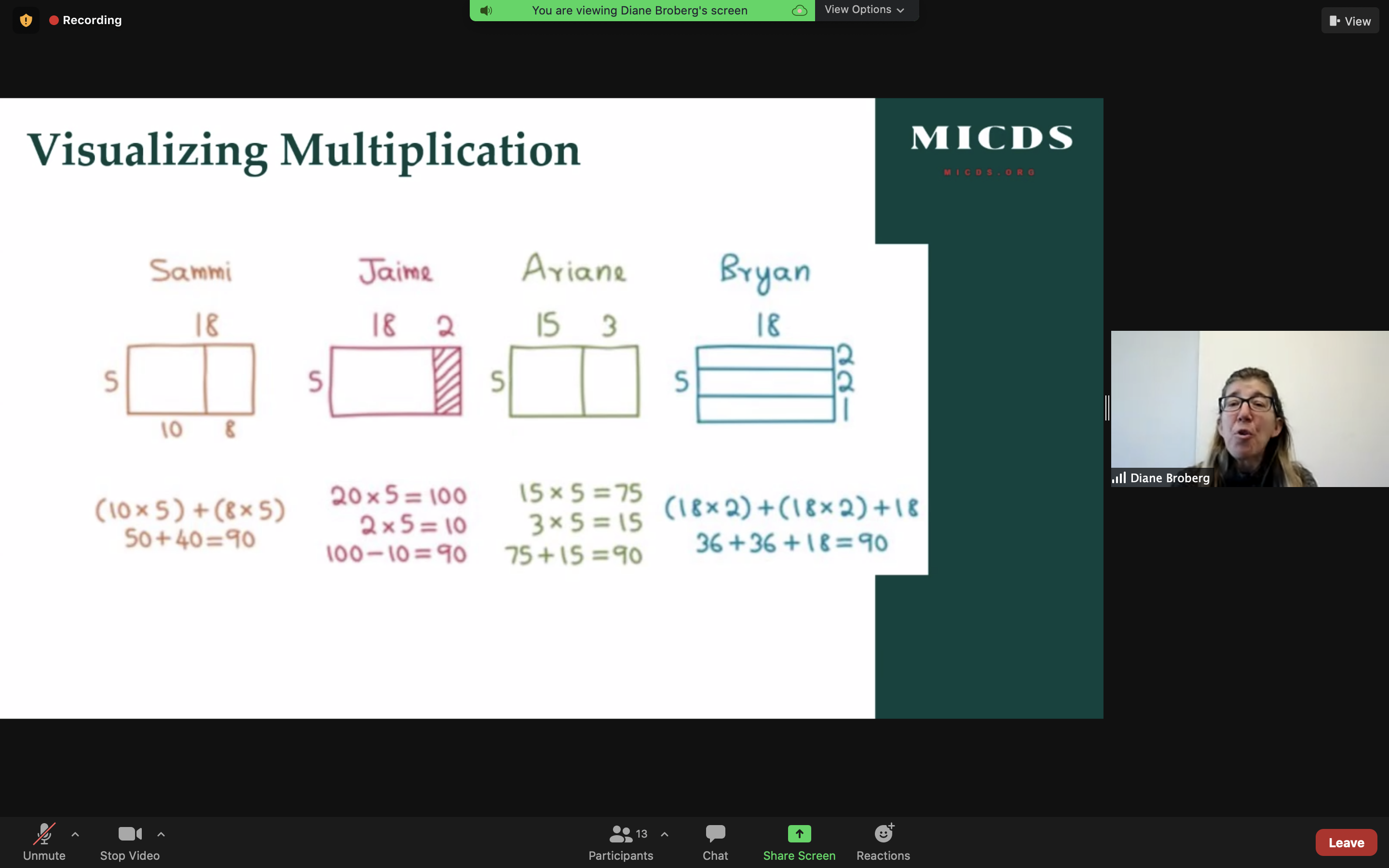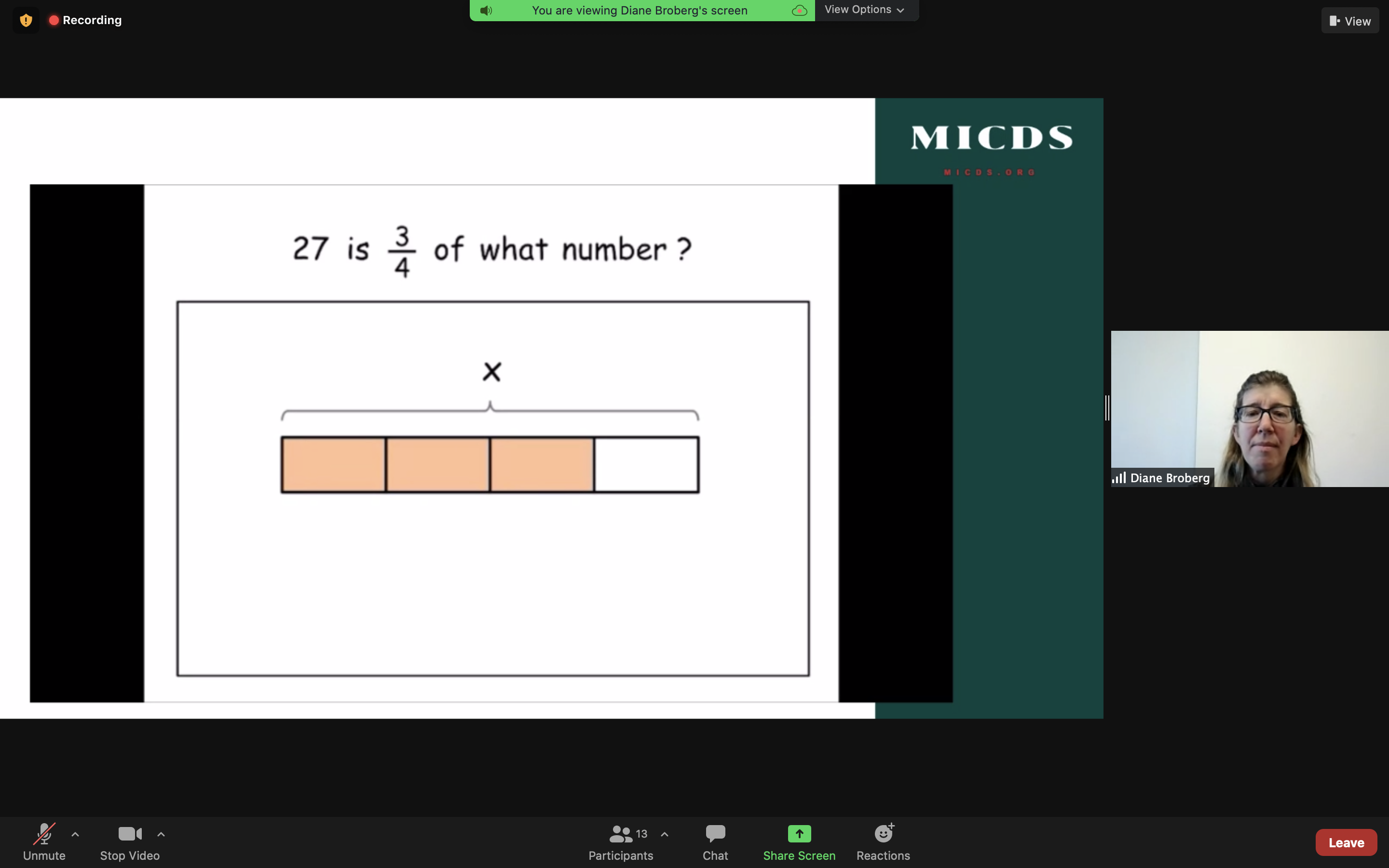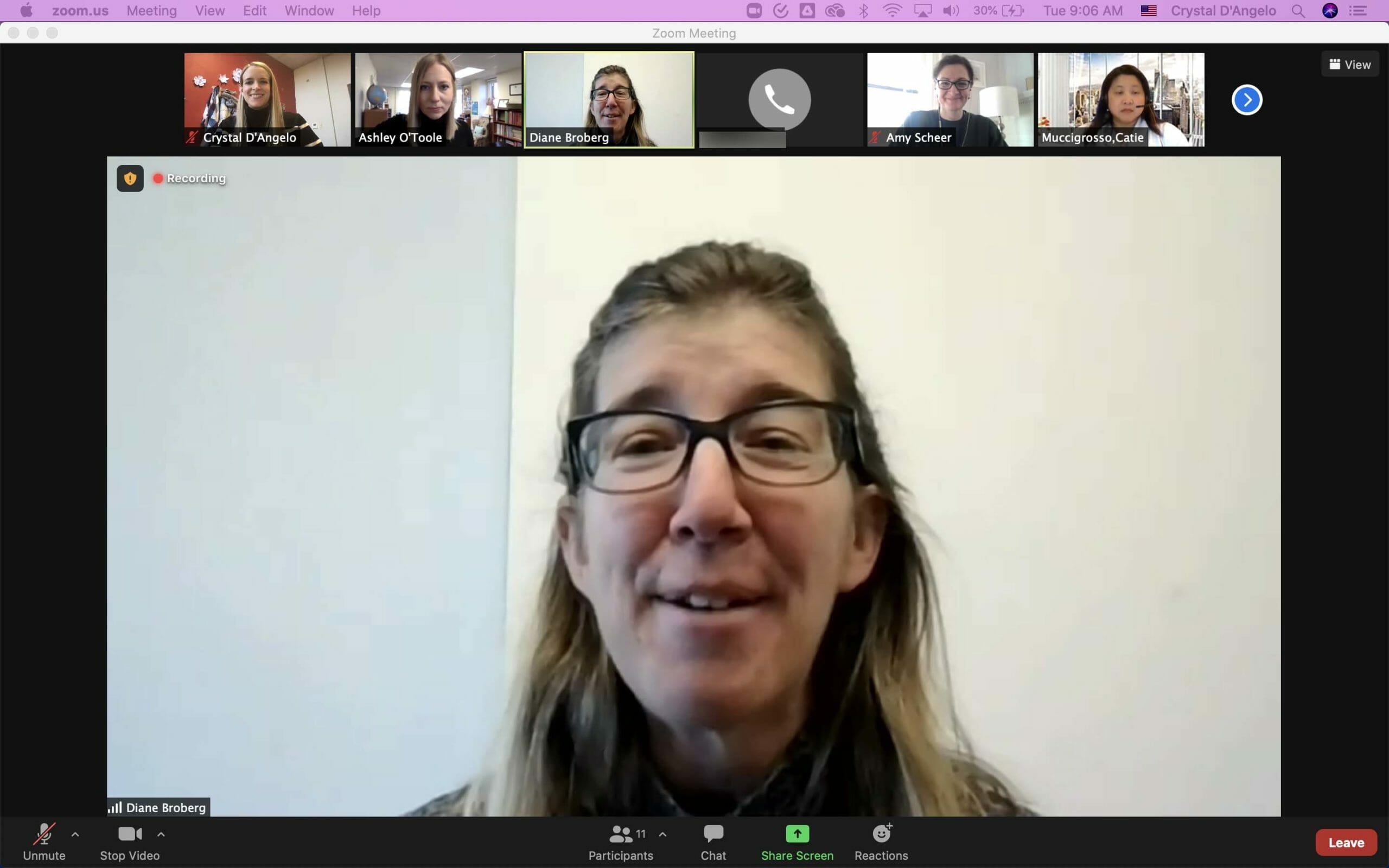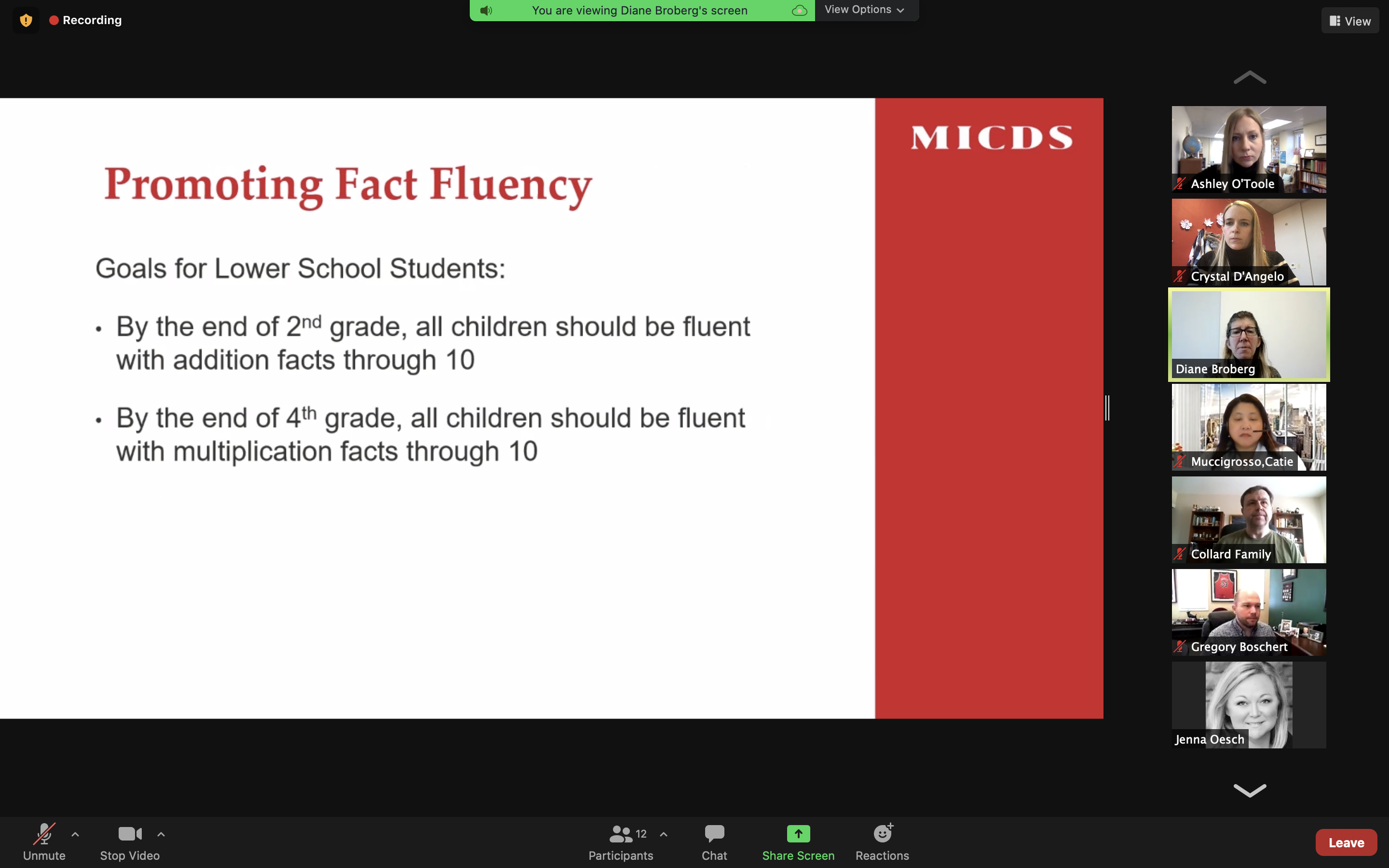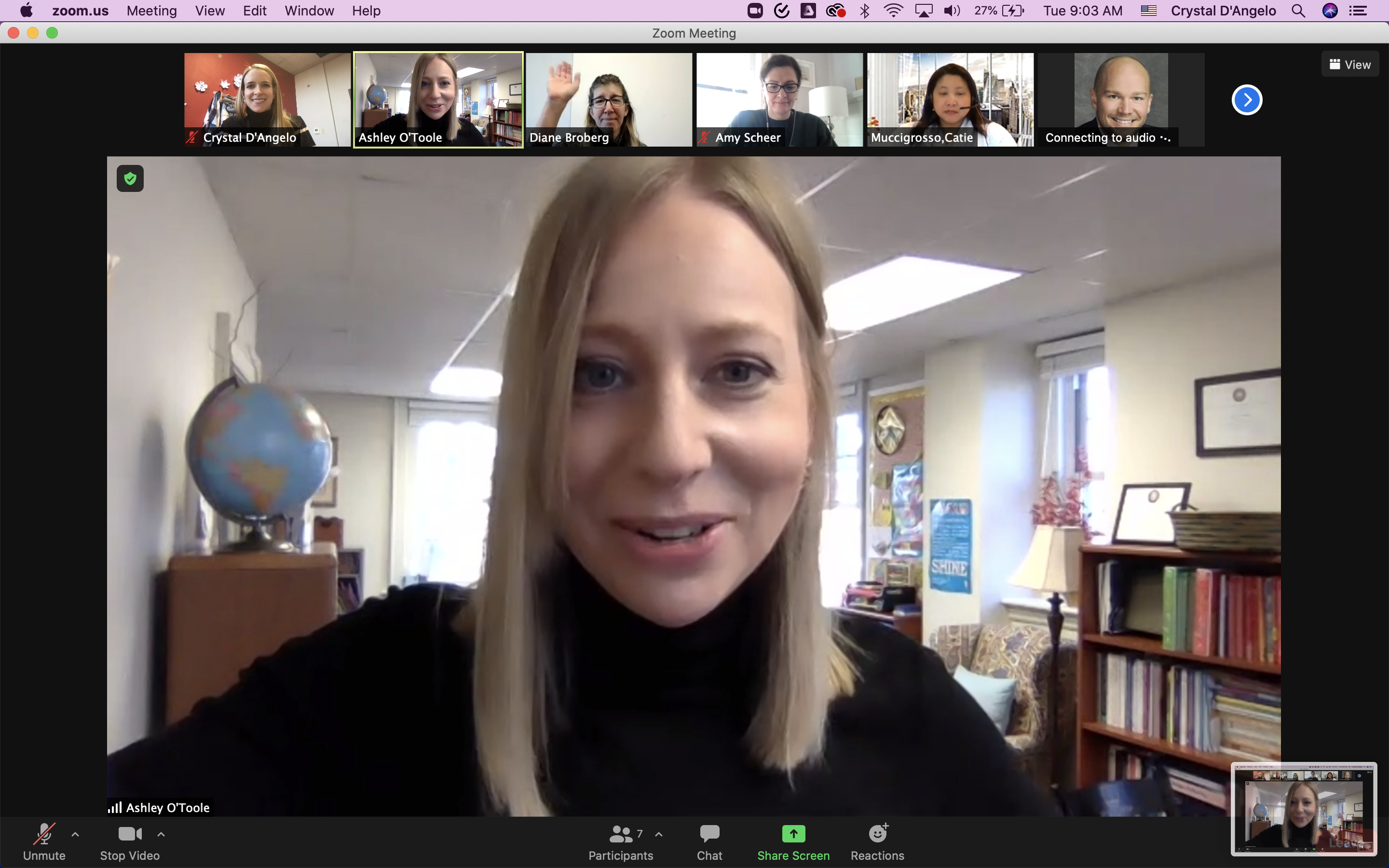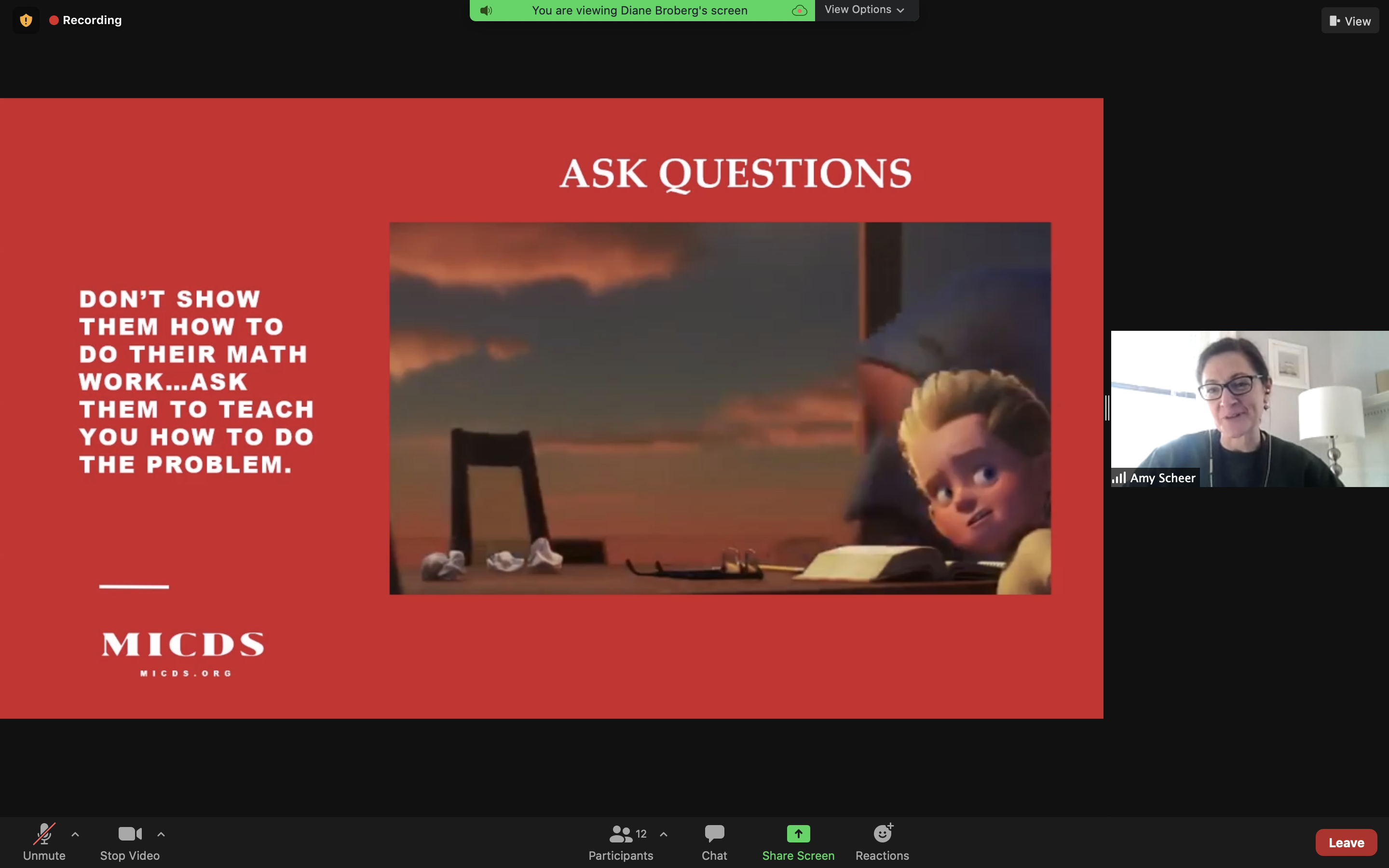Beasley parents had the opportunity this week to attend a Lower School Parent Education Coffee entitled Cultivating Approaches to Build Independent Mathematicians. The session took place over Zoom and was led by JK-12 Math Department Chair Diane Broberg, Head of Lower School (and Prior JK-12 Math Department Chair) Amy Scheer, and Lower School Learning Specialist/Counselor Ashley O’Toole. Those who joined gained perspective on the deep and meaningful mathematical work that their students are engaged in at MICDS from junior kindergarten through 12th grade. They explored the intentional foundation on which this work is built, learned about the theory and practical applications of math within the Math in Focus curriculum, and exchanged ideas on how they can partner with their children to help them build mathematical confidence.
The Lower School math foundation, Math in Focus, has been utilized at MICDS for almost a decade. Broberg shared that the curriculum is based on the Singapore Mathematics Framework. This framework has five parts: skills, concepts, processes, metacognition, and attitudes. She stressed that only one of the five parts is “skills,” emphasizing that all of these components working together are what make a child excel in math.
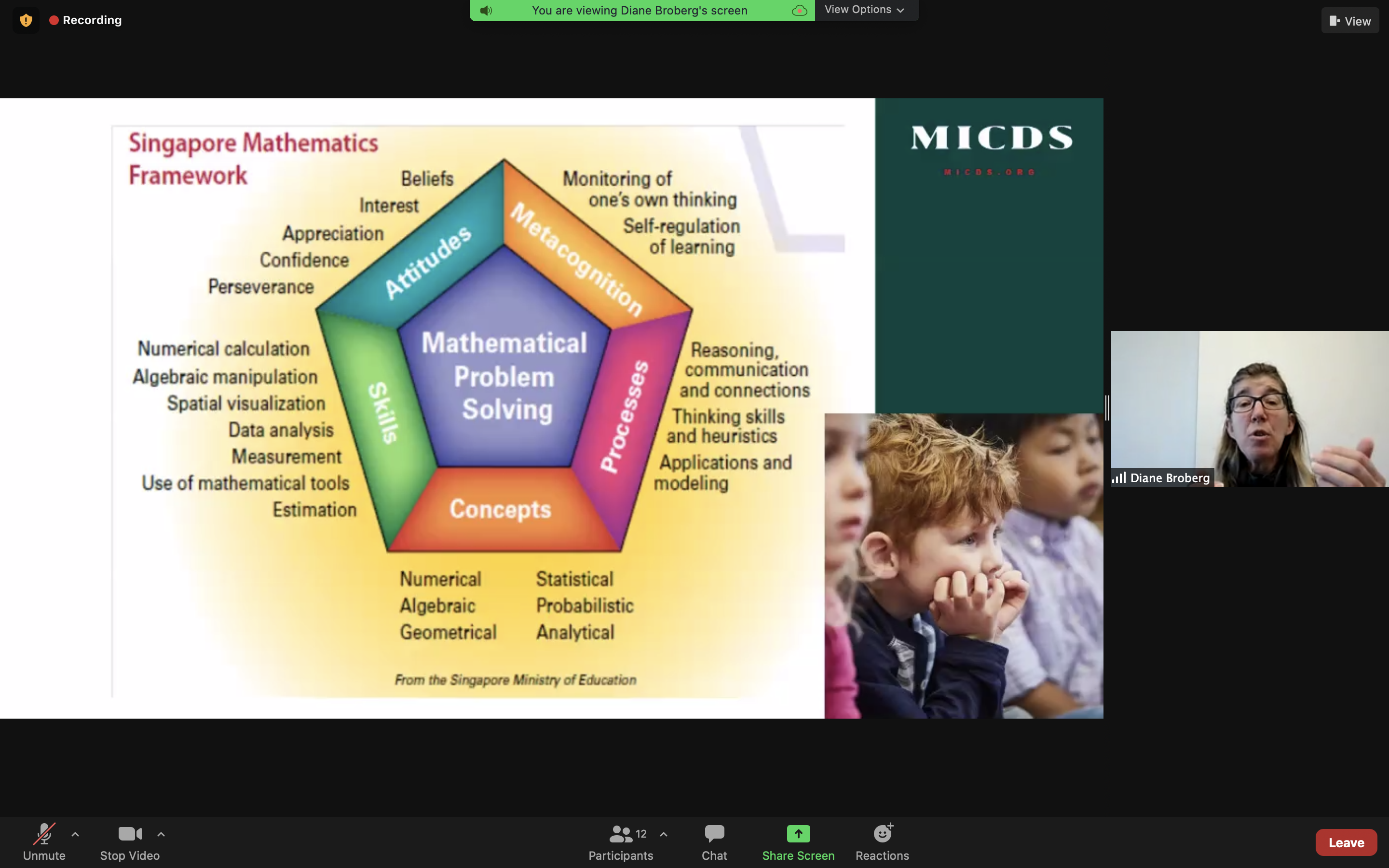
Parents and guardians then enjoyed segments of a TED Talk on Making Sense of Math by Greg Tang, a speaker and educator who is passionate about creating good mathematicians. Tang talked about visualization, reasoning, and number sense—all key components of our Math in Focus curriculum in Lower School.
For visualization, our goal is to allow students to understand a concept by picturing or imagining it. Broberg explained, “This concept of visualizing things can start in JK and it can work all the way up. If we build a solid foundation of this, all of a sudden, visualization becomes something that students can do in algebra, pre-calculus, or even calculus. When students begin to see math versus thinking of it as a rote process, math becomes more tangible for them.” This idea is further demonstrated by visualizing multiplication shown in the examples below.
Next, Tang’s video explored reasoning. He introduced this component by saying, “I don’t want you to remember what to do; I want you to figure it out.” Tang compared the “traditional” way of completing a math problem to using “common sense.” He shared an example where his own daughter solved a problem by using a traditional approach but did not think at all about what the equation was telling her. Instead, he recommends encouraging students to use common sense along with Part-Part-Whole representations.
In Lower School, Broberg sees Part-Part-Whole representations setting the foundation for understanding math for JK and SK students and beyond. “What does the missing part need to be to complete the whole,” she asks in reference to the examples below. “If we can build these foundations of boiling down math, it can make the subject less intimidating and easier.”
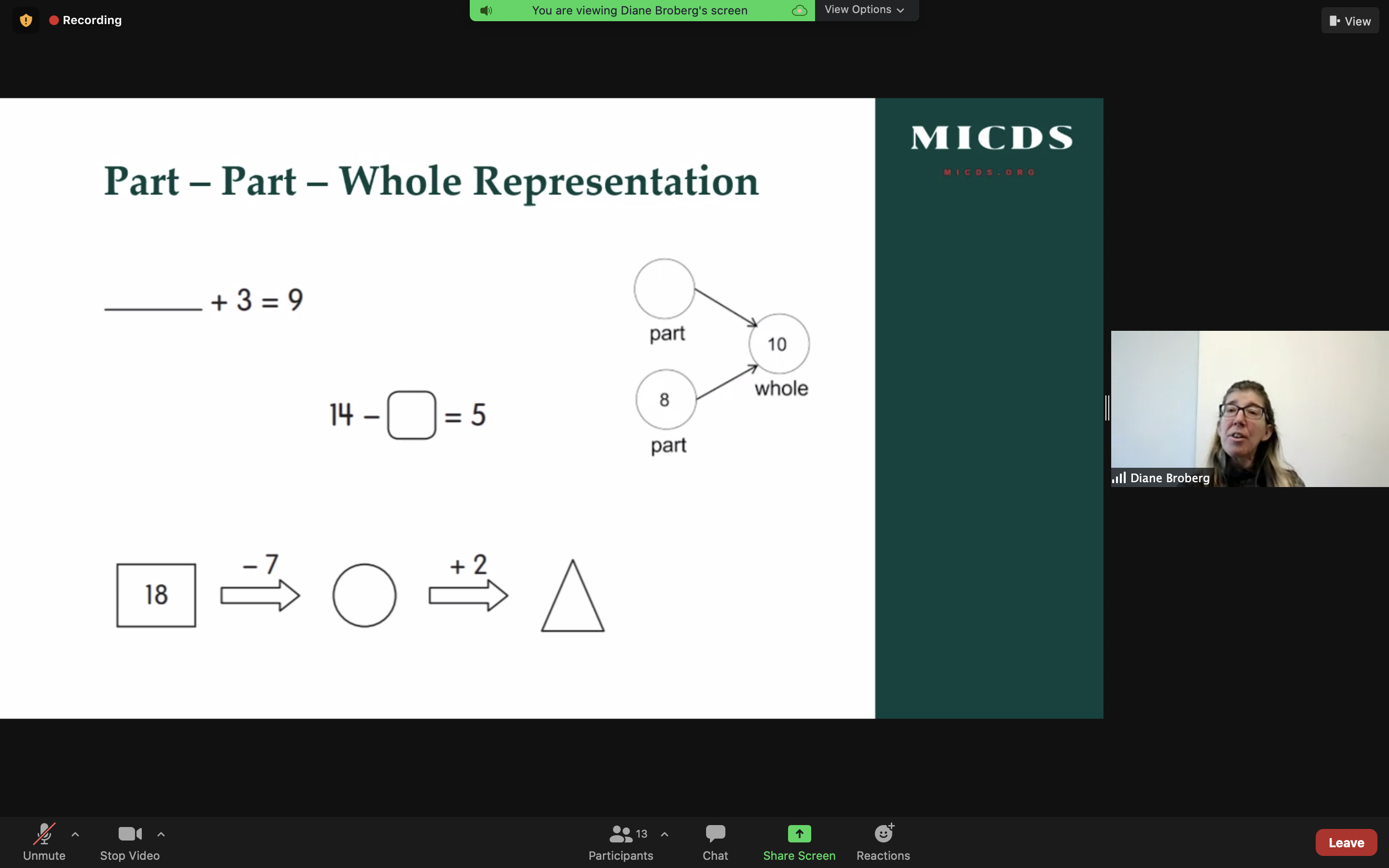
That said, some like traditional methods. This is fine but it’s important to understand what the equations are really saying. If you start to think about math, it starts to make sense.
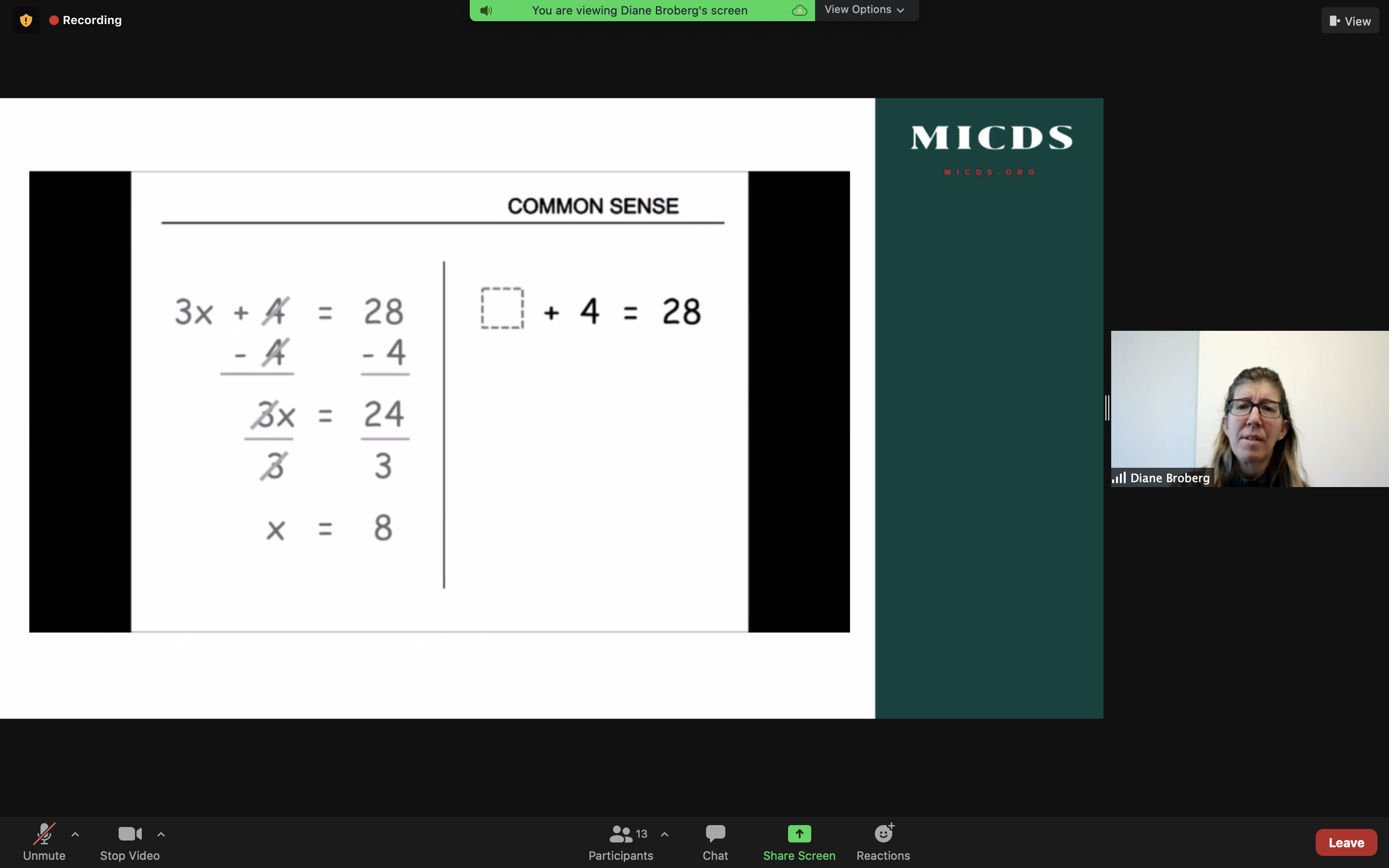
Lastly, Tang talked about Number Sense and how to encourage kids to be good with numbers. If you can make sense of the numbers and think about them in smart ways, as the numbers get bigger, the same concepts apply. Broberg demonstrated this by showing an example from 8th grade where students use the bar method for visualizing a simultaneous equation. Thus, the Math in Focus concepts continue up the curriculum.
What can parents/guardians do to support their child’s math development? Broberg, Scheer, O’Toole, and some of the parents in attendance covered a lot of ideas for integrating math as part of everyday life. Here are just a few of the examples shared:
- Help with fact fluency. Fact fluency is when facts come fast and accurate to a learner. First, the child needs to understand what the fact means. Then, it can be automated. This is like learning a new language. At first, one has to think diligently as they speak in the new language, but eventually, it becomes second nature. At MICDS, there are two main goals of fact fluency in Lower School. By the end of 2nd grade, students ought to be fluent with their addition facts, and by the end of 4th grade, they ought to be fluent with their multiplication facts.
- Play games that incorporate math. Yahtzee, checkers, chess, LEGOs, tic-tac-toe, and coin counting. Put coins in stacks of five. Work on puzzles to improve geometric skills. Sort a big bucket of buttons.
- Cooking. Learn about measurements, conversions, timing, and temperature. Cooking is its own recipe for mastering math!
- Read books and try to notice the math. Rather than just working on literacy skills, you can read with a math lens. Think of counting the red fish and blue fish in a Dr. Seuss book.
- Make math part of your everyday language. How many tires are in the parking lot? How many seconds will pass before the light turns green? Can you count out the exact change needed for checking out at the grocery store?
- Ask questions and let them teach. Instead of showing your child how to do their math work, ask them to teach you how to do the problem. If they end up with the wrong answer, walking through might help make the mistake clear. If they got the right answer, they’ll only become more confident in figuring out math problems when they can explain what they did and why.
Families also had the opportunity to ask questions. They learned that our 4th and 5th grade teachers work closely together in the second half of the school year to get ready to transition students from Lower School to Middle School. They figure out which students need extra practice and discuss the best approaches for preparing individual students for the next level. Also, attendees learned how the ERB and STAR math tests are helpful measurements for monitoring progress in math while teachers continually are attuned to their students’ growth. Both tests and everyday interaction with the student guides the teacher in figuring out the next step for each child’s math journey.
